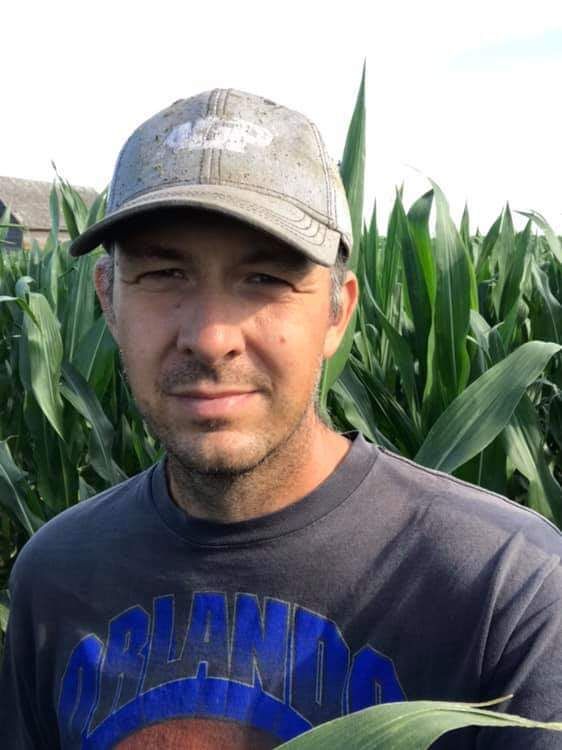When rainfall averages about 22 inches a year it means producers need to think both short and long term in analyzing their operation.
Michael Thompson understands he needs to conserve soil and regenerate the soil so it can be more productive and withstand stretches when Mother Nature does not show her best side. Thompson, Almena, Kansas, is in a family partnership with Thompson Farm and Ranch LLC, in northeast Norton County, near the Nebraska state line. Michael Thompson farms with his brother, Brian, and his father, Richard.
They grow corn, soybeans and wheat and manage a cow-calf herd that rotationally grazes on native range. Diverse cover crops are incorporated into the operation.
“We practice what we preach. We’re living the lifestyle,” he said, on which the family’s operation is all no-till or never till, as he likes to call it. “We try to do rotational grazing on as many acres as we can and incorporate cover crops on the land.”
Northwest Kansas producers face erosion challenges—whether through wind or heavy rains—which is why he believes in cover on the ground to prevent topsoil loss.
He focuses on increased biology, soil cover, water-holding capacity, and carbon levels.
For example, eliminating compaction layers can help with infiltration. Compaction layers often have a link to past tillage practices many years ago. A living plant puts down roots, helps to break up compaction zones, and allows water infiltration.
If the soil is bare nine months out of the year, as an example, there may be an opportunity to plant a cover crop. The immediate benefit is it reduces the threat of floods or high winds that can cost the farmer and rancher precious resources.
Getting a cover crop started in western Kansas is not easy, he said. Planting a cover crop into the stubble right after the wheat harvest can work, Thompson said, because that provides a wider window to capture moisture.
‘Farming’ the sunlight
Thompson said sunlight feeds plants for a growing crop or a forage that can be fed to make pounds of beef. If sunlight does not go into a living plant, it can be counter-productive by drying out the soil and making the soil literally as hard as a brick.
Everything that is green is using moisture but also as the plant transpires it puts moisture back into the atmosphere, where it is more likely to spur rain, he said.
A good soil cover can help collect the moisture and improve the soil.
After wheat harvest, a grower might consider a warm-season mix of millet or sorghum sudan or a legume like a sunn hemp, cowpea, or mung bean. A grower might also consider sunflower or rapeseed, which are plants with aggressive root systems that can open up the soil up with a green-growing plant with biomass on top to negate runoff and cover on top so the soil does not dry out.
Practical timeline
Start small, start with different seeds and don’t be afraid in mid- to late-August after the plants get 1- to 2-foot tall to get out a shovel and start digging and see if the roots are going down vertically or spreading out horizontally. If the roots are spreading out horizontally, it likely means the plants hit a compaction layer. That may mean another year of planting seeds that will penetrate those layers and being patient.
“Eventually they will go through those compaction layers.”
Cover crops are a resource that can work in northwest Kansas if managed right, he said.
“If you have cattle in your operation this can be incorporated and not necessarily maybe as a quote-unquote pure cover crop but more of a diverse (type of) forage crop,” Thompson said. “You can create a lot of diversity in these mixes and the cattle do very well on them.”
Information for this story was from the Soil Solutions podcast with Jessica Gnad, the executive director of Great Plains Regeneration and soil health content consultant for High Plains Journal. Visit soilhealthu.net/podcasts to hear the podcasts. Sign up to receive the monthly Soil Health HPJ Direct newsletter and Soil Solutions podcast notifications by visiting hpj.com/signup and checking Soil Health.
Dave Bergmeier can be reached at 620-227-1822 or [email protected].




